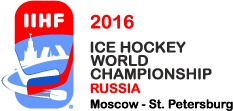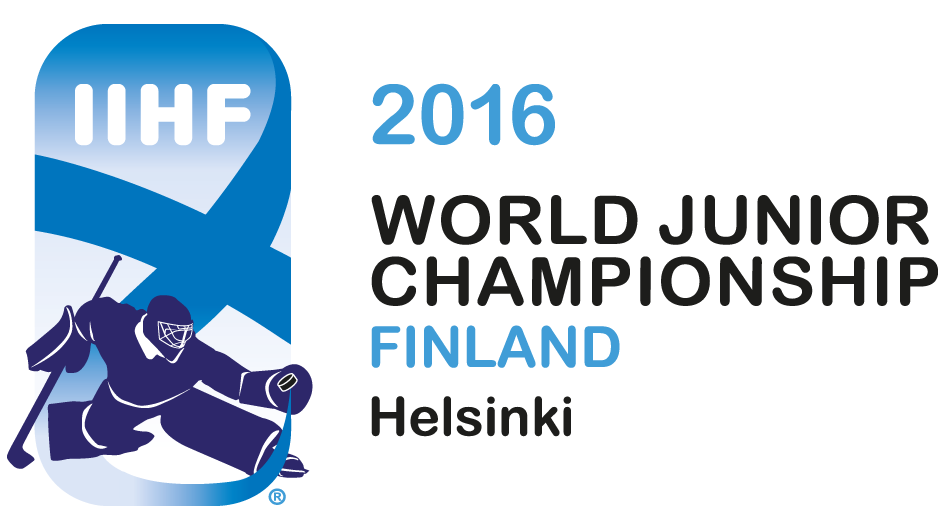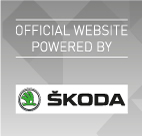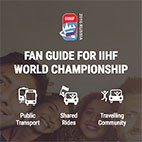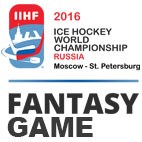Specialty braces
Specialty braces
Ortema produces on-site and for hockey world
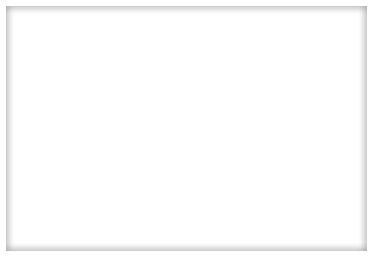
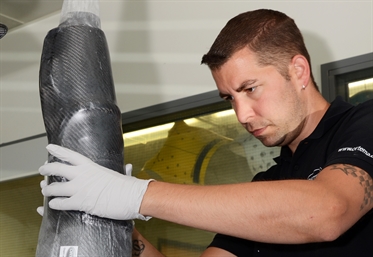 Sven Stephan of Ortema produces a custom-made brace for our writer. Photo: Chapin Landvogt
Sven Stephan of Ortema produces a custom-made brace for our writer. Photo: Chapin Landvogt
They are subjected to a great deal of wear and tear in playing no less than seven games in 10 days of preliminary-round action after what has, for most, been a gruelling season of 50-90 games already. These men, proudly wearing their national team colours, are naturally very well protected by state-of-the-art equipment. This includes a whole array of regular items from the helmet to the skates.
What you may not know is that for many of these athletes who have endured what used to be career-threatening knee injuries, they’re still gliding across the ice as if nothing ever happened thanks to the unique, custom-made sports braces from Ortema. The company, stationed in the sleepy town of Marktgroningen, Germany, has developed into the foremost leader in the development of ice-hockey-specific knee braces intended to completely prevent the occurrence or reoccurrence of particularly ACL tears, amongst other knee injuries.
Due to the hard-hitting, fast-paced nature of the sport, ice hockey players are constantly in danger of suffering serious ACL tears and other knee injuries. These injuries are far better diagnosed than in times past and most usually require an operation for players who are serious about their careers. After such an operation, 4-8 months of intensive rehab is required before the player can get back to competition and the knee is rarely the same as it originally was.
To prevent this type of injury, and more importantly, to prevent it from being repeated after an operation, there’s no getting past making use of a protective, yet functional knee brace. In the course of brace development, this often hampered the athlete’s actual movement, while failing to be able to stay in place in the course of games and practices. As such, Ortema CEO and founder Hartmut Semsch spent years working on and developing just the right brace that not only completely prevents further knee injuries caused by the various dangerous impacts of the sport, but also fits perfectly and can as such, can barely be noticed when playing.
“After an ACL-related injury incurred while skiing, I myself needed something that functioned. As I’m a bit shorter and had very muscular, stocky legs, my thighs were simply too thick and nothing on the market fit me at the time. There simply was no solution out there for me. A medic myself working at the medical centre here in Marktgroningen, one that has long specialized in ACL tears and operations like no other in Germany, I just knew I had to find a solution that was unique and met the needs of the individual athlete,” states Semsch about the origin of his life’s work.
And indeed he did. Through years of trial and research, his company has come to establish the foremost custom-made brace on the market. It’s one that can stabilize and protect the knee joint, which even if an operation isn’t conducted, will also go a long way in preventing further tearing and pulling of knee ligaments as well as the automatic erosion of the meniscus, something that results when the knee joint can’t lean on the original, vital function of an ACL.
“There is no such concept like the one we have here at our site. We have everything under one roof and there’s no such equivalent or identical all-in-one solution in central Europe. To our knowledge, there’s none like it in the world,” Semsch further explained. “We haven’t even seen anything like it in the USA, which has a number of producers on the market. Still, not a one of them is producing the personal, customized, individual braces that we specialize in.”
Knowledge of Ortema's product has grown throughout the international ice hockey community. Originally, some of Germany’s most prominent pros, including no less than international stars such as Marco Sturm (current Head Coach of Team Germany), Marcel Goc (Captain of Team Germany), Philipp Grubauer (goalie for the Washington Capitals), and Dennis Seidenberg (Stanley Cup winner with the Boston Bruins), amongst many others, started making use of the product once they faced serious knee injuries. They have no qualms in expressing their satisfaction with the special braces.
"For a long time now, I've been able to depend on the quality support provided by the high-value products from Ortema. They function wonderfully and I can wear them comfortably without my movement and capabilities being compromised. This allows me to place my 100 per cent concentration on the practices and the games," says Goc, who is one of the players at the World Championship in Russia.
His endorsement is shared by Seidenberg, who wears an Ortema brace on each knee and is able to continue his career at the NHL level thanks in good to them. "I've made use of the knee braces for years and admittedly on both knees. These braces are able to stabilize my legs without delimiting my range of movement. Thanks to the fact that they are very lightweight and fit like a glove, I can barely notice that I'm wearing them when practicing or playing a game.”
For the host Russians at this year’s World Championships, champion-making head coach Oleg Znarok will be watching their powerhouse team thrill the hometown crowds with the knowledge that Ortema braces are being worn by a number of his prime athletes. In recent years, particularly thanks to Ortema’s stands at World Championships, more and more top-flight Russian players and a number of KHLers have become loyal Ortema customers. The IIHF Ice Hockey World Championship currently feature one of the most prominent Ortema customers whosoever, namely Yevgeni Kuznetsov. The Washington Capitals star broke onto the NHL scene in a big way after having been an exciting international name in recent IIHF tournaments.
So how does the company create this custom-made product? What’s involved in the process? How long does it take and what happens if adjustments need to be made? Basically, what do you need to do to get a brace that could be absolutely vital to your sports career?
As the process is unique to the industry, Ortema builds the individual custom-made brace that is completely ready for use within a 36-hour period, if not less. In the case of a knee brace, it all starts with the creation of a cast of your leg. The procedure is roughly the same as when getting a cast made for a broken bone. This serves as the model foundation upon which the brace is modelled and will go a long way in insuring that the brace fits the exact shape of your leg with little room to wiggle.
Following this, the Ortema team of specialized engineers goes to work in deciphering the key movement points, drawing them out on the cast. This step is not taken lightly as there are always 4 eyes viewing the initial cast of the leg to inspect the dimensions and the holes being made in the cast. A needle-thin bar is then placed through the middle from one side of the knee to the other to find the balance. An electric bore machine then makes holes in the cast right where the central diameter points of the knee are located.
An electro knife is then used to widen the holes in the central knee point in a square formation to allow for a medal tool bar to be placed through the two points, thus serving as the beginning of a frame. Then cast is then sent to the cement station, where a mold is made with plaster cloths being put all around the cast. This serves to cover all possible holes in the cast. Just seeing all the materials necessary for creating this concrete leg that presents exactly your dimension, you’d think the team were laying down a new street. It’s clearly intensive hands-on work that goes into the initial stage, before the team members’ true skills actually come to light.
“Washing your hands 25-30 times a day usually isn’t enough. It’s not only all the materials we’re working with, we’re also touching and measuring patients before and after operations whose respectively injured areas haven’t been washed for weeks at a time,” explains one of the centre’s foremost technicians. “We also have to make use of a lot of body lotions to give our skin the chance to keep up with everything, because with all this plaster and the washing, the skin can get very dry and irritated. But it all has to be done to get to the final product.”
The molded cast is then placed into concrete in its sand form, sticking out like a stick stuck in the sand at a beach. Concrete mixture is put together and then dumped into the hollow part of the case. A metal pipe is placed right in the middle and held there, sticking out roughly 10 inches higher than the rest, until the concrete has solidified enough to let it stand there on its own, which actually only takes roughly 30-60 seconds.
The casts are then cut off the concrete, which then serves as the model of the leg. This model is filed down to remove any rough spots and create a fine surface for the next step. In the process, estimations are made as to where slight curvatures may need more room for movement or where the brace will be attached later when in practical use.
Small nails are then hammered in to serve as inspection points for later phases. A new paste is mixed together and then brushed on with a paint brush in thin layers all around the leg. The dried paste is then rubbed down, sometimes up to 2-3 hours, to establish a flat surface equalling about the thickness of skin.
The metal rods going through the middle of the leg are removed and the actual end rods for the brace are placed in. This included the metal clips and gears that will serve as the rotating point of the brace. Rubber place holders are nailed into the upper and lower right and left leg sides on the inside and outside. They serve as a guide for where the later strap holes will be cut into the brace.
A cloth then covers the leg and serves as a 3 mm place holder, because that’s how much space should come between the brace and the skin. After the brace is formed in further steps, this cloth will ultimately be removed entirely. But before that, an entire carbon sheet (in a very hot status) is placed on the molded leg and then formed accordingly. This is what ends up being the unbreakable carbon brace that is the foundation of the unit.
Once the form-fitting brace is completed, the upper (above the knee) and lower (below the knee) sections are cut out with a very precise heavy-duty electric cutter and polished to comfortable perfection. The lower and upper section are then united with rotating joints, very intricate the finest detail, that will eventually allow you to play without restrictions. Constant measuring and visual analysis is invested so as to keep the brace in line with the model body part. Once the sizing and fitting is complete, all items such as the above-mentioned cloth are removed and the brace is fitted with highly compressed and thin foam layer that not only ensure wearing comfort, but also prevent the brace from squeezing the skin or pulling possible leg hairs.
Four padded and insulated straps are brought on to the brace and ensure a comfortable, yet consequent hold with two straps above the knee and below it. Important emphasis has been placed on the straps’ ability to keep the brace in fit while not restricting the leg’s range of motion or the natural flexing of the legs muscles while in movement.
A fitting is conducted with the patient and all the kinks get worked out. The braces are not only put on to check the fit and comfort levels, but a number of range and movement tests as well as movement on a treadmill are conducted in order get an exact read on what kinks there may be in actively wearing the unit. If necessary, adjustments are made until everything is just right and the brace is ready to be played. At that point, the player could head straight to the rink and get back on the ice with new freedom, support, and confidence. And all this has taken place within a 24-36 hour period.
To be clear, if you can’t make the trip to the facility in Germany, Ortema is more than happy to work in conjunction with the orthopaedic specialist of your choice, who would simply need to create the cast of your leg and send it to the Marktgroningen site. You’ll still receive the finished product and if need be, some shipping back and forth can take place to fine-tune things, but for the most part the braces should fit perfectly based on the cast alone.
As for Ortema itself, you shouldn’t be surprised if you’ve found yourself hearing more and more about it, as it has long been a regular partner with the international ice hockey community. It began with a cooperation directly with the German Ice Hockey Federation in 2001. This turned into a cooperation with the IIHF beginning in 2005. Like every year in May, you can find Ortema stationed around the arena for this World Championship, serving not only the general public, but also the national teams who are there and in action.
“We’ve often created a cast mold right at the arena for a player participating in the World Championship. This World Championship is a big one for us, in light of the increasing amount of orders we’ve been getting from Russia,” explains marketing manager Heiko Schmidgall, who is currently in Moscow. “Either I or one of my partners will bring the casted mold back to the company and then returned to the event within a roughly 36-hour period, naturally with the finished product in hand. This is a real possibility – right here and right now.”
Back to Overview

